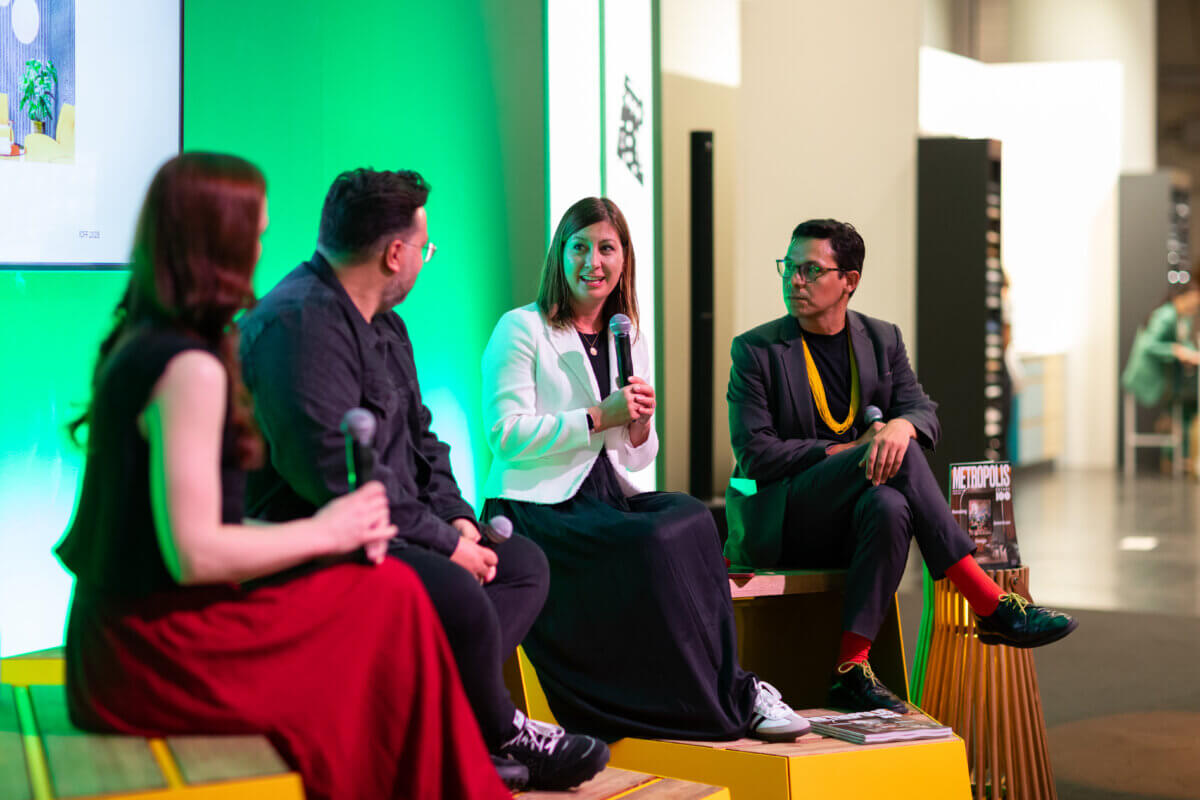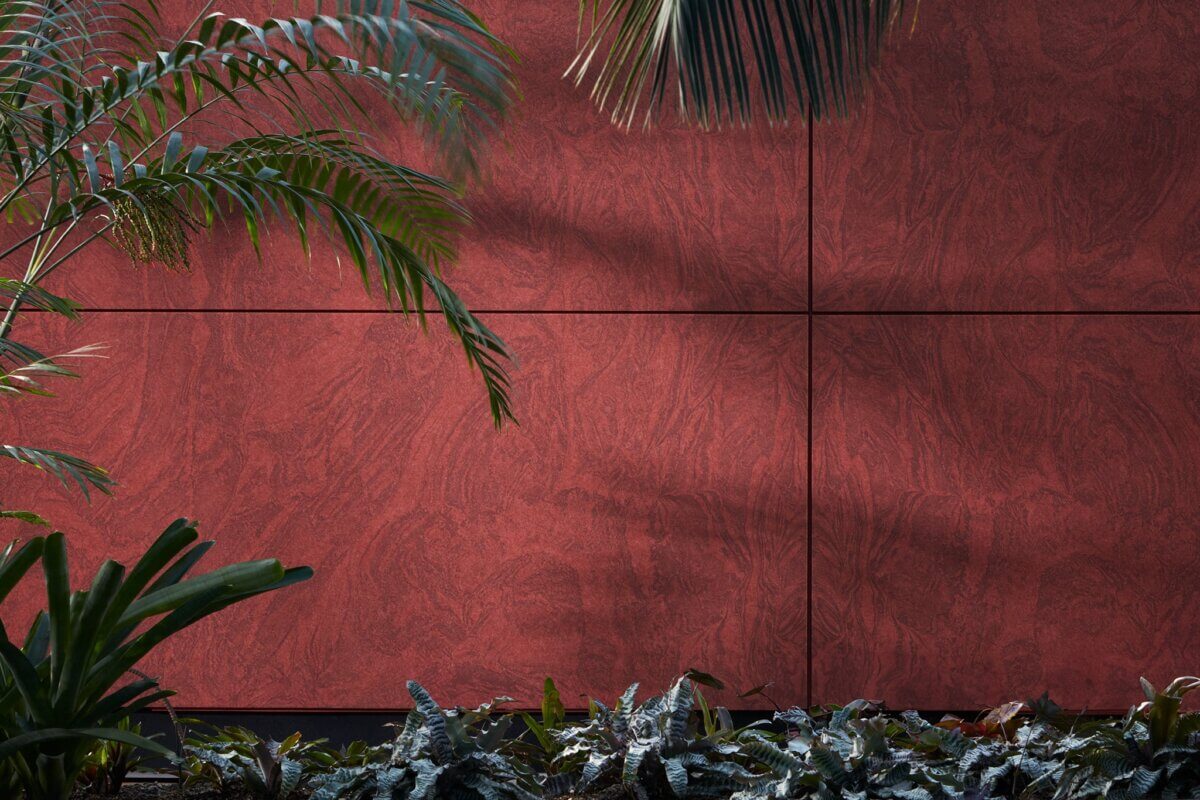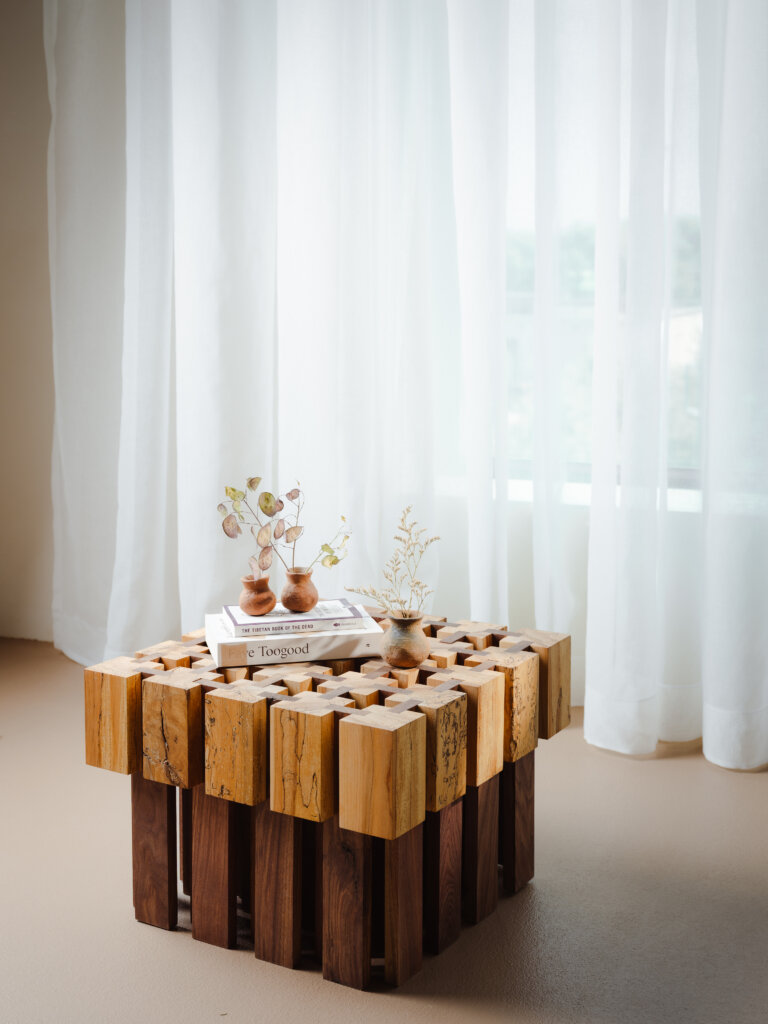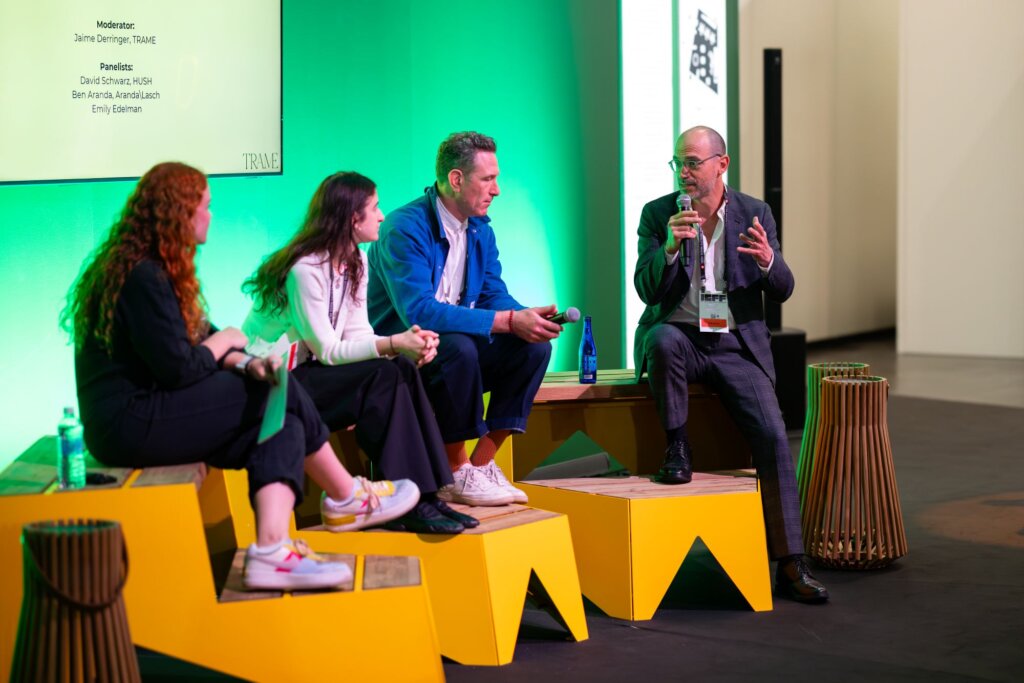
At this year’s ICFF, an energizing conversation unfolded at the Oasis stage: “How Sensory Design Shapes Inclusive Spaces.” Presented in partnership with Turf and moderated by Francisco Brown of Metropolis Magazine, the panel brought together experts Caroline Noble (Ames Design Collective), Faraz Shah (Turf Design), and Elizabeth Von Lehe (CannonDesign). The discussion dove into the evolving role of sensory design in shaping more inclusive, human-centered environments across workspaces, public institutions, and beyond.
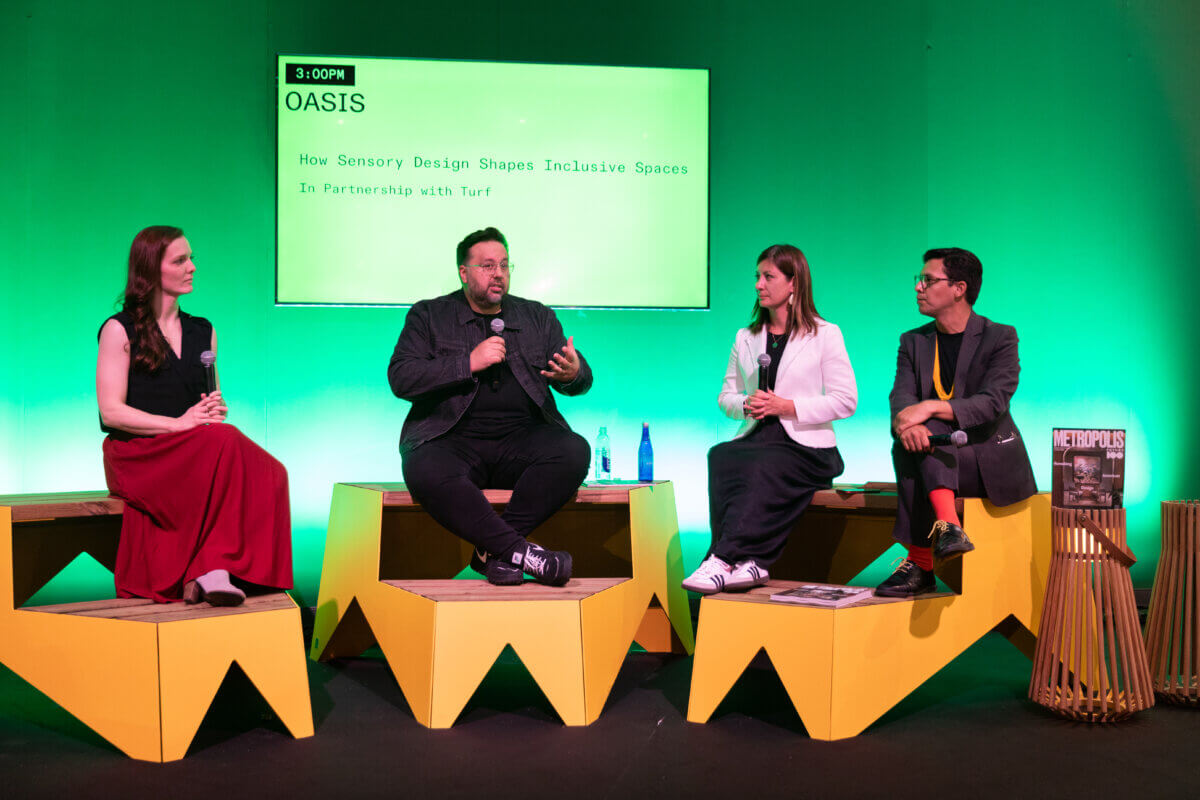
How Sensory Design Shapes Inclusive Spaces panel at ICFF 2025, photo credit: Jenna Bascom Photography (panelists from left to right: Elizabeth Von Lehe, Faraz Shah, Caroline Noble, Francisco Brown)
Redefining Sensory Design
The panel began by defining sensory design not just as an aesthetic pursuit but as a multi-sensory engagement with space. As Caroline Noble noted, effective sensory design goes beyond the visual and includes sound, smell, touch, and even proprioception—our sense of body position in space. This sense is critical in designing for neuroinclusion, as it impacts how grounded and oriented people feel in a space.
Each speaker emphasized that good sensory design is about intentional layering. Elizabeth Von Lehe described it as setting a “vibe”—where elements like lighting, acoustics, color, and tactility coalesce to create a mood. Faraz Shah added that sensory design isn’t just about comfort but about empowering people with choice, particularly in public or workspace environments.
Strategies for Neuroinclusive Design
The conversation touched deeply on neurodivergent design, a topic gaining traction as more organizations prioritize inclusive work environments. Von Lehe emphasized that true inclusivity means offering multiple sensory options to accommodate different needs—quiet areas, collaborative zones, and personal retreats.
One example was Turf’s new headquarters in downtown Chicago, where the team applied a wide variety of acoustic, visual, and spatial strategies to balance office function with showroom flair. Shah highlighted the use of acoustic materials that aren’t overbearing—a nod to the misconception that more sound absorption always equals better sound quality.
Noble and Shah also pointed to ongoing research, including their Soundscapes initiative, which aims to translate the calming harmonies of nature into architectural acoustics. They referred to this as “biophilic design for the ears,” blending digital fabrication with organic inspiration.
Data, Research & the Power of Listening
The panel made a compelling case for using both quantitative and qualitative data to guide design. Noble discussed the importance of sound walks—an observational tool where users (not just leadership) track the acoustic experience of a space. This grassroots approach reveals real user needs often overlooked by top-down planning.
Von Lehe stressed the importance of inclusive client engagement, especially in institutional settings. She described how even a simple staff-wide survey at a healthcare facility uncovered major usability gaps—like nurses being unable to use a beautiful new café because it was too far from their stations.
Practical Applications & Emerging Trends
Among the many insights, a few key practices stood out:
Start with empathy: Ask “Who are we excluding?” before specifying materials or layouts.
Embrace change: Designs should be editable over time—flexible enough to evolve as people’s needs change.
Design for choice: Avoid one-size-fits-all spaces by offering a variety of sensory zones.
Consider sight-lines and transitions: A quiet space isn’t truly quiet if it’s adjacent to a noisy one without visual and acoustic separation.
Make acoustics visible and beautiful: Integrated sound treatments—like Turf’s digitally printed wood and stone textures—are both functional and expressive.
As the panel concluded, the speakers offered some lasting advice. Shah reminded designers not to be intimidated—“Just start asking better questions.” Noble encouraged collaboration with therapists, educators, and even children themselves when designing trauma-informed or sensory-sensitive spaces. Von Lehe advocated for designing with the understanding that no one gets it right the first time, and that’s okay—as long as the space allows for adaptation.
The ICFF panel left attendees inspired and armed with actionable insights. As Brown summarized, today’s design challenges—whether sustainability, sensory needs, or inclusion—demand transdisciplinary, intentional, and human-centered solutions. Sensory design isn’t an optional flourish—it’s the foundation of inclusive environments that truly work for everyone.
Visit turf.design to learn more about Turf
More from ICFF:
ICFF 2025 Highlights: Creativity, Innovation and Connection in NYC
Original Thinkers: Designing with Purpose, Passion, and Integrity
Save the date for ICFF 2026, May 17-19, 2026!
